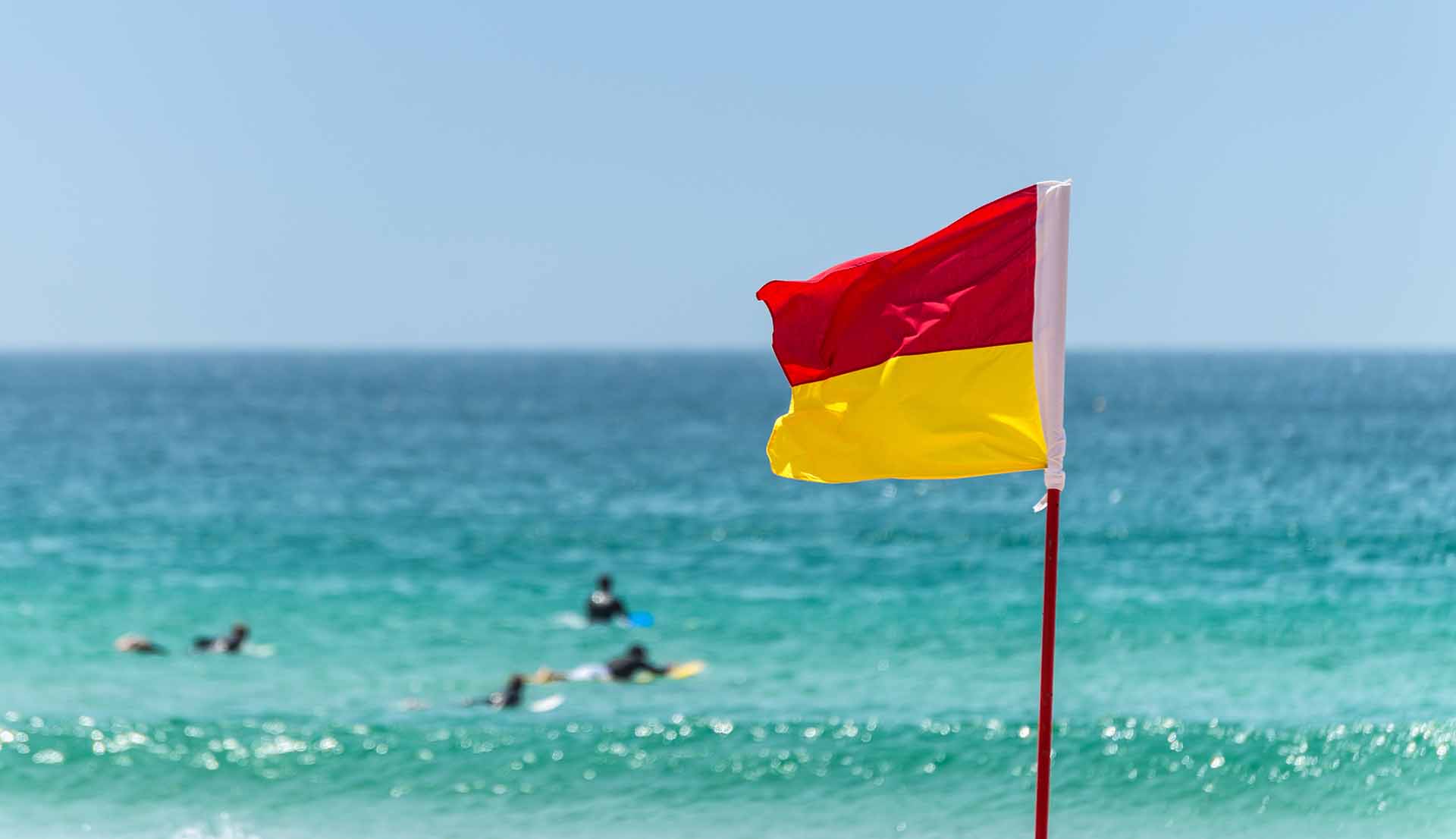-
As a lifeguard, what are the beach safety essentials you want everyone to know?
Firstly, swim at a patrolled beach. My advice is to swim close to the shore, between the red and yellow flags. The flags are very important – this is where the lifeguards are patrolling. Also, learn to look out for the dangerous current/beach closed signs. Don’t ignore them; these signs are in place for your safety.
Secondly, learn a bit about water safety. Watch the water before you swim, learn about rips and make sure you stay calm if you get into trouble. Don’t go in to the surf if you’re not comfortable – you need to know your limits. Check for strong currents, as rips are stronger and fiercer in big surf. If in doubt in large surf, stay on the beach and wait for a calmer day.
Lastly, be sun-safe and never swim alone – make sure you have someone with you.
What are rips, and how can you spot one?
A rip is a fast-moving channel of water that can be dangerous, even for experienced swimmers. Rips are formed when the water that has come into the beach needs a way to escape quickly, so it forms into a channel going back out to sea. Rips usually slow down and stop out behind the area where the waves are breaking.
When you are watching the beach there are a few clues to look for. Rips can be visible through a combination or all these things, so look carefully and ask a lifeguard if you are unsure.
- Look carefully for areas where no waves are breaking, as this can be evidence of a rip.
- The water might look darker and a bit murky in a rip because it is deeper water. This is why you can’t touch the bottom if you get caught in it.
- You might notice foam floating out to sea. The foam could be in the rip, so this is another clue.
What should you do if you get caught in a rip?
Stay calm. Don’t panic, and float to save your energy. Raise one hand to let everyone know you’re in trouble. Use your weaker arm, so you can use the stronger one to help you keep afloat until help arrives.
Never try to swim against the rip. Rips can move in all different directions, so first work out which way the current is taking you. If you are a strong swimmer, you can swim to the left or right of the rip and then start to make your way towards the beach.
If you are not rescued, a rip will often take you out behind the breaking waves. Aim to move towards the whitewash in the waves as this may be a sandbank. The waves will also help push you back into the beach.
The water is home to lots of creatures, and some can give us nasty stings. What should we look out for?
Blue bottle stings are very common. You can get the stinger off by washing with fresh water. The pain from the sting varies but usually lasts for about 30 minutes. If you can, find a lifeguard as they may have a sting spray that helps. If not, go home and have as hot a shower as you are comfortable with, as that usually helps.
Trent Maxwell and author David Lawrence have recently released a children's fiction series to help kids learn about the beach and water safety. Maxi the Lifeguard: In Deep Water, The Stormy Protest and Beach Battle (Affirm Press, $12.99) are available online and in stores now.
Do you know these beach safety essentials?

-
How is ‘phubbing’ hurting your relationships?
Here’s how to stop phubbing and be more mindful of your phone habits, to help improve face to face interactions with your family and friends.
-
Are the winter blues real?
Simple ways to boost your mood in winter.
-
Mental fitness explained
Just as you work to strengthen your body, your mental health deserves attention and exercise too.
-
Signs it's time to visit the dentist
Nobody wants to go. But there are good reasons to – promise.
-
The link between stress, anxiety and jaw pain
Physiotherapist Michael Chan explains how stress and anxiety can cause jaw pain, and how to help get some relief.
-
When you can't sleep next to your partner
You love everything about them – except their sleep habits.
Subscribe to receive the best from Live Better every week. Healthy recipes, exercise tips and activities, offers and promotions – everything to help you eat, move and feel better.
By clicking sign up I understand and agree to Medibank's privacy policy





.jpg)
